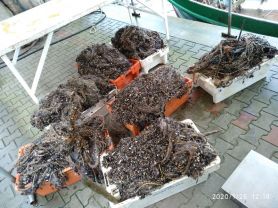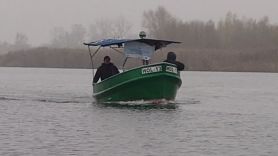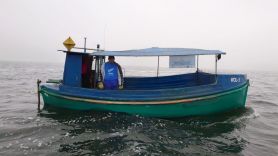We clean the Baltic and the Lagoon: The project of the Wolin Fishermen's Association comes to an end
The FAO report[1] indicates that as much as 640,000 tonnes of fishing gears are lost or abandoned in the seas and oceans each year, which accounts for approximately 10 percent of global marine litter by volume. As much as 70% of macroplastics (plastic waste with a diameter of more than 20 cm) floating on the surface of the ocean in the so-called huge patches of are fishing related. Synthetic fishing nets, broken at shipwrecks and other underwater objects, or lost during storms, retain their catchability and continue to fish uncontrolled for many years for many years, thus becoming deadly traps for Baltic animals such as fish, seals, porpoises and diving birds.
In May 2020, the second edition of the project "We clean the Baltic and the Lagoon", implemented by the Wolin Fishermen's Association in Pomeranian Bay, Szczecin Lagoon and Kamieński Lagoon, came to an end. The aim of the project was to remove all kinds of marine litter from the sea and lagoons, especially "ghost nets", which are lost fishing gears.
The project’s aim was to limit the negative effects of fishing activities on the ecosystem of the Baltic Sea and to actively involve fishermen in protecting the environment The project was financed from the Operational Programme "Fisheries and Sea", under the measure 1.4.1 "Collecting lost fishing gear and marine litter".
110 fishing vessels from the ports of Dziwnów, Mrzeżyno, Niechorze, Rewal, Międzyzdroje, Świnoujście, Karsibór, Lubin, Wolin, Kamień Pomorski and Stepnica participated in the project. The aim of the project was to clean the Baltic Sea and Lagoons from marine litter and to increase the awareness of the society and sea users about abandoned fishing nets and their impact on the environment.
As a result of the project, the Wolin Fishermen's Association removed in total 18,698 kg of marine litter from the area of the Pomeranian Bay and the Szczecin and Kamieński Lagoons. Most of the removed waste consisted of fishing gears, including nets and poles (made of polypropylene), lead lines, stylion, lines, anchors, occasionally tires and plastic bottles.
________________________________________
[1] Abandoned, lost or otherwise discarded fishing gear, FAO, 2009




